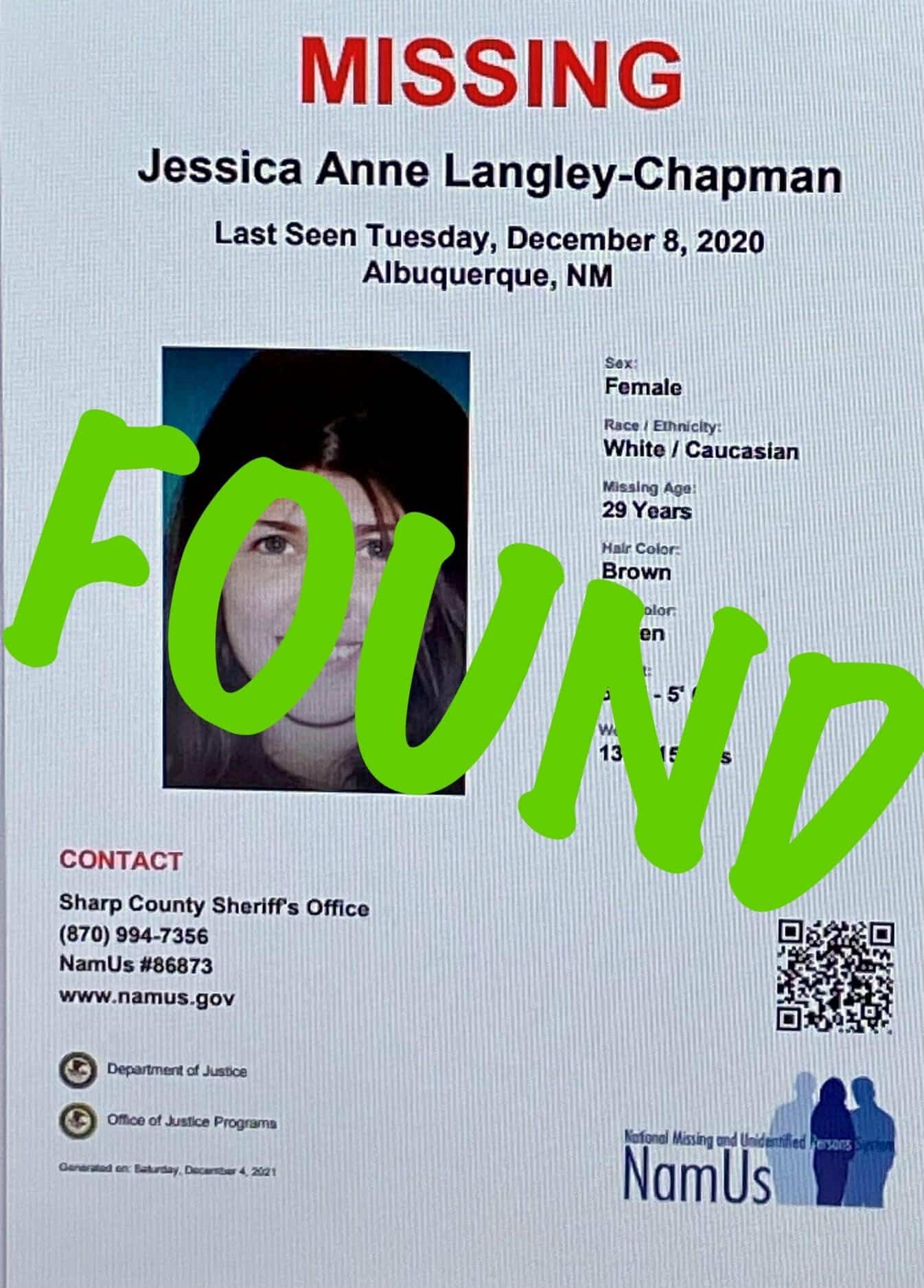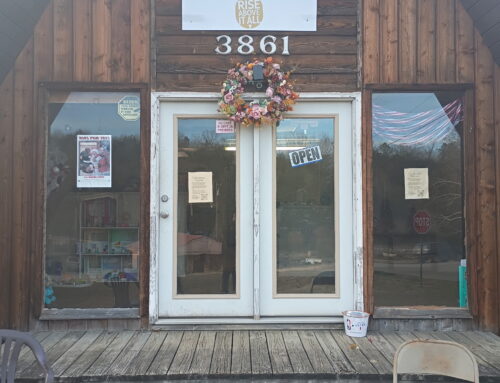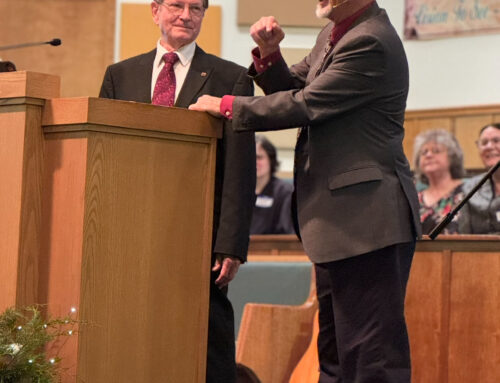It had been 364 days since Taunja Chapman or anyone in her family had heard from her daughter 29-year-old Jessica Ann-Langley Chapman.
Many times, over the course of the year since Jessica had disappeared, Taunja spent many sleepless nights searching for any sign or news of the whereabouts of her daughter without luck.
Recently, Sharp County Detective Cham Buchanan became aware of the disappearance and made quick work of the search.
On Dec. 2, Buchanan placed Chapman’s information in to the National Missing and Unidentified Persons System (NamUS), something officers in other states and counties had for whatever reason, failed to do.
On more than one occasion, Taunja had reached out to law enforcement in states she had believed her daughter could have been residing including Montana, Oregon, New Mexico and North Dakota.
Despite her best efforts, Taunja did not receive the same support from law enforcement agencies in other states as she did by local law enforcement.
“We were prepared for the worst, because as a family, that is just how we handle things,” Taunja said. “We pray for the best, but we brace ourselves for the worst and it’s because if the worst does come to pass, you’re more prepared, but you always want the best outcome.”
Taunja said it has been a difficult year for her family and the unknown and what ifs were not making the years blows any easier.
“I was worried about her for a long time, but actually seeing the missing person flyer, it is hard. It was hard when I scrolled through Facebook and would see it. But people started sharing the flyer and it started generating conversation,” Taunja said. “Finally, information started coming back to us and we started getting some news.”
Just a few short days after being entered into NamUS, Taunja received a call and words she had waited nearly a year to hear.
“On Dec. 7, I got the call. Det. Buchanan is my angel. It’s not been entirely the outcome I had hoped for, but it is so much better than I was braced for. Jessica is alive and that is a relief. It took less than a week. We had waited 364 days to just hear those words,” Taunja said. “My hat is off to law enforcement and all they did to help us.”
According to NamUS, more than 600,000 individuals go missing in the United States every year.
Thankfully, many missing children and adults are quickly found alive and well, however tens of thousands of individuals remain unfound for more than a year, which for most departments, changes the classification of the case to a “cold case”.
Approximately 4,400 unidentified bodies are recovered each year with approximately 1,000 remaining unidentified and unclaimed after one year.
About NamUS: “In 2003, the National Institute of Justice (NIJ) began funding major efforts to maximize the use of DNA technology in our criminal justice system, including in the investigation of missing and unidentified person cases. By 2005, NIJ expanded its efforts with the “Identifying the Missing Summit”, where criminal justice practitioners, forensic scientists, policymakers, and victim advocates defined major challenges in investigating and solving missing and unidentified decedent cases. As a result of that summit, the Deputy Attorney General created the National Missing Persons Task Force, which identified the need to improve access to information that would help solve missing and unidentified person cases. The National Missing and Unidentified Persons System (NamUs) was created to meet that need.
In collaboration with NIJ, the National Forensic Science Technology Center (NFSTC) and Occupational Research and Assessment (ORA) developed and launched the NamUs Unidentified Persons (UP) database in 2007. The following year, the NamUs Missing Persons (MP) database was launched, and in 2009, the databases were connected for automatic case comparisons, expanding the power of NamUs to make associations between missing and unidentified persons. NFSTC managed the NamUs program through September 2011, in partnership with NIJ.
In 2011, daily management of the NamUs program was transitioned to the University of North Texas Health Science Center (UNTHSC), with continued administration and oversight by the NIJ. Management through the UNTHSC’s Center for Human Identification enhanced NamUs’ ability to facilitate DNA services and enhanced the quality and quantity of DNA information entered into NamUs.
In 2012, an Analytical Division was added to NamUs, offering criminal justice professionals additional resources to locate information on missing persons, locate family members for DNA sample collections and next of kin death notifications, and disposition tips and leads. Also in 2012, the NamUs AFIS/Fingerprint Unit was created, bringing additional in-house forensic services to NamUs, including a collaboration with the FBI’s Latent Print Unit to search all unidentified decedent prints through the Next Generation Identification (NGI) system.
In late 2015, plans to perform a complete rebuild of the NamUs application began. Stakeholders from the law enforcement, medical examiner, coroner, non-profit, and public sector were interviewed as part of a Discovery Phase to plan the features and functionality of the upgraded system. Development work began in the first quarter of 2016 and culminated in the release of the NamUs 2.0 application in May 2018.”
Lauren is a an award-winning journalist who decided after 10 years of newspaper experience to venture out. Hallmark Times was born.






